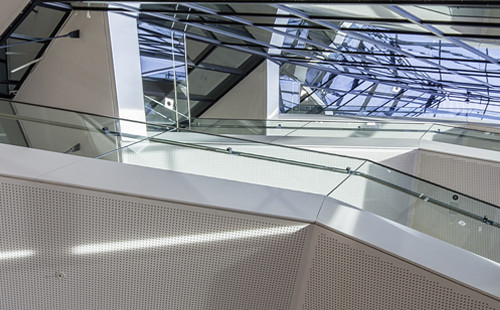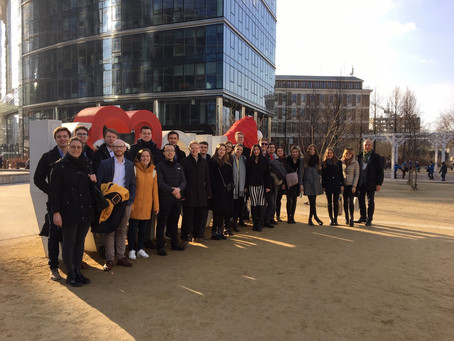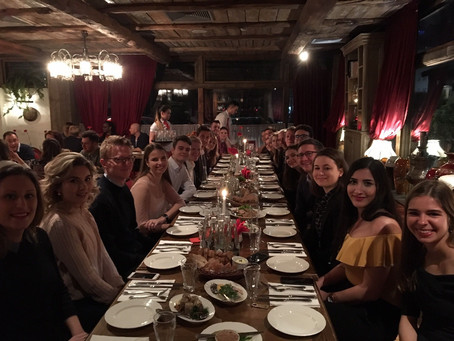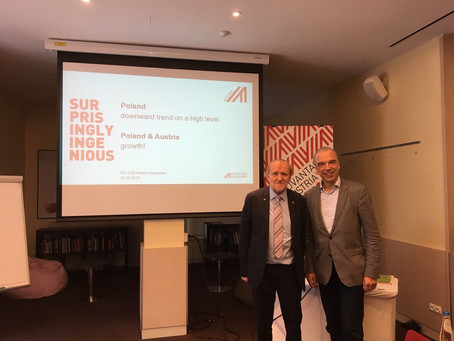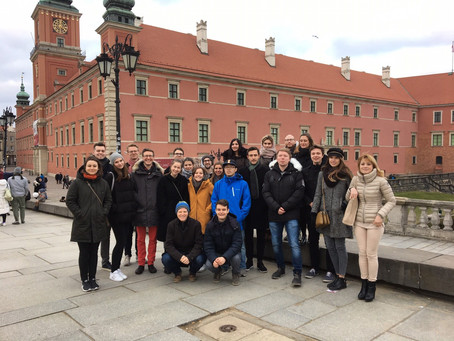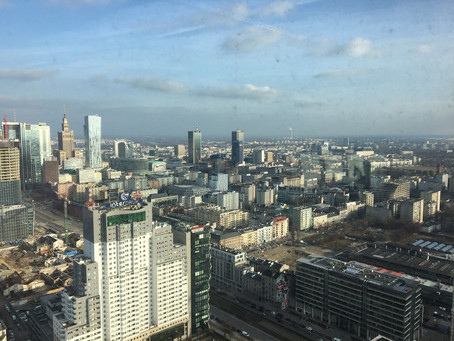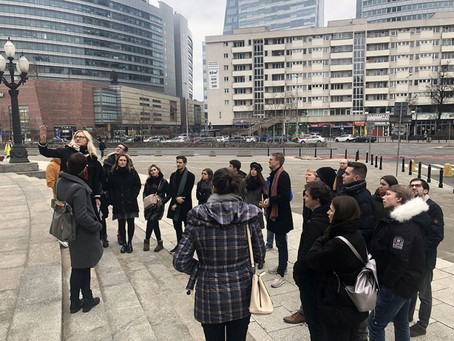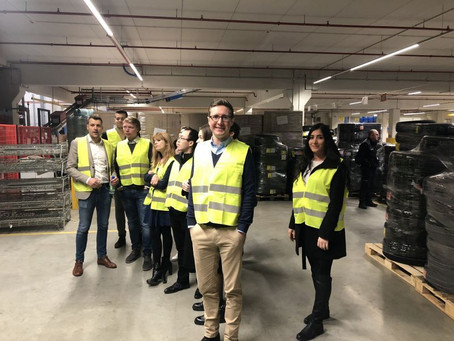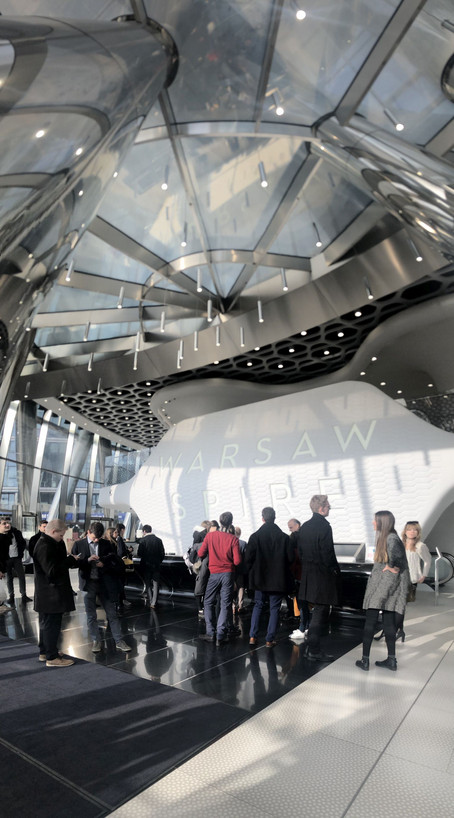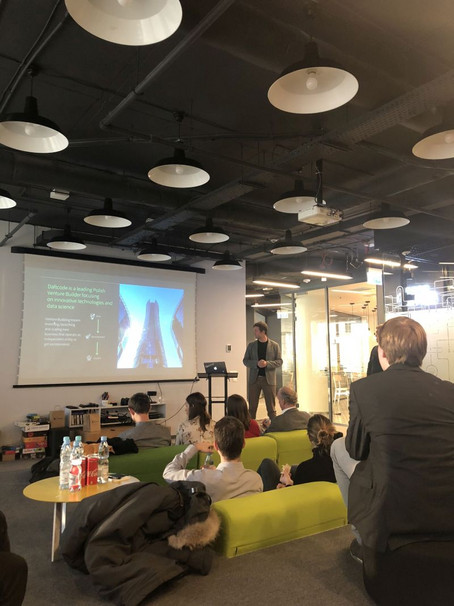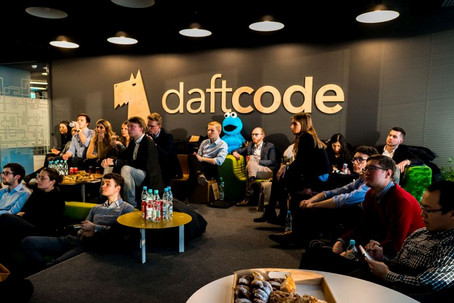MC CEE field trip Warsaw 2019
Hearts, Cars, Code, AI and Lenin – Poland’s High-Tech Future
Maximilian Walz und Arrigo Batton
“New Growth Models for CEE” is the topic of the research seminar of this year’s Master Class CEE (MC). How well are CEE countries doing on their transition from an efficiency-driven to an innovation-driven economy? In order to explore this topic, we – the 25 MC students from 12 countries and 11 master/doctoral studies – conduct desk research but also try to get insights by visiting companies, partner universities and institutions in selected countries of the region. Our first field trip led us to Warsaw where we had the chance to talk to leading tech-CEOs and professors at the Warsaw School of Economics.
Before digging into the purpose of our field trip, let’s say a bit about the beautiful city we found ourselves in. We kicked-off our trip with a humorously guided tour on Sunday afternoon. Walking through historical and modern areas, we could get a grasp of Poland’s capital city. The perceivable change from the communist history towards a Western democratic state and to a modern city left a good first impression and raised our curiosity for the upcoming company visits and meetings.
Our first visit brought us to the Warsaw School of Economics. Professor Piotr Płoszajski welcomed us warmly and gave a presentation about the “Age of exponential technologies: towards the new post-digital normality”, a thought provoking lecture about a world where physical meets digital and biological. To cope with times of fast changes, he recommended standing still for a moment and think. Then CIONET - a worldwide network of 8,000 CIOs - was introduced to us. In Poland 800 digital leaders from all business sectors are members of CIONET that provides a platform for the exchange of expertise and best practices and plays a central role in the digitalization efforts of Poland. In the afternoon we visited “The Heart”, a hub for open innovation, and “Daftcode”, a venture builder with 15 firms, in Warsaw’s high-tech center, the Warsaw Spire. In both cases the CEOs were convinced that Poland is well on the way to become a leading player in the digital economy in Europe.
The next day we headed towards the outskirts of Warsaw. Our destination was the new logistics center of InterCars, the biggest distributor of automotive spare parts for cars and commercial vehicles in Poland and CEE. The COO told us about the company's fast development from one store to a listed company with 550 stores in 16 countries. After the presentation we had a tour of the newly opened warehouse, one of Europe's most advanced logistic hubs. Touching one of the most pressing issues in CEE, namely labour shortage: 30% of the employees in the warehouse were from the Ukraine.
During the visit to the Warsaw Stock Exchange we learned about its central role for financing the growth and internationalization of Polish firms. The WSE is the most dynamic market place in CEE and with 27 new listings ranked third in Europe in 2018 – the Vienna Stock Exchange had one listing in the same period. The day ended with an amazing farewell dinner at Lenin's favorite restaurant - Czerwonym Wieprzem - followed by a nightcap in a hidden bar.
On our last day and before we left to the airport, the Austrian Trade Commissioner, Dr. Karl Schmidt, talked about the economic situation in Poland and economic relations between Poland and Austria. Poland has had an impressive economic run in the last years culminating in a 5.1% GDP growth in 2018 and is further closing the purchasing power gap to Western Europe. Bilateral trade is growing and with 550 subsidiaries Austria is well represented in Poland. Walking around in Warsaw you can feel the growing prosperity with new restaurants, bars, shops and residential and office buildings under construction around each corner.
Overall, it was a great opportunity for us to get these great insights into Poland’s and especially Warsaw's economic situation and to see how a new generation of entrepreneurs and managers is driving the modernization and digitalization of the economy. What impressed us in all meetings were the drive and entrepreneurial spirit that the speakers conveyed to us.
The trip accomplished a multitude of purposes: we grew together as a group and became friends; we learned during the sightseeing tour about the difficult history of Poland and Warsaw; we got in contact with these well-educated, entrepreneurial and internationally oriented Polish managers that will change the country and partly the world, at least in their ecosystems. We can truly confess that our group fell in love with Warsaw. We are now looking forward to our next field trip that will bring us to the high-tech hub Brno and beautiful Prague. We are sure that our report on new growth models for CEE will not only impress with facts and figures, but also real-life examples from innovative and progressive firms and entrepreneurial people in CEE.
